AMD Budget
Leaving the entry-level sector behind, and with a budget of around $800, our options increase significantly. Prices have dropped again and we could either build a cheaper budget system or add significant new capabilities to the systems. With the recent release of the $99 ATI HD 4770, we made the choice to provide even more performance and capabilities at the $800 price point. Our goal is to provide more performance in the upper entry segment than any OEM can provide at the same price.
This is the first time we have included a discrete GPU into an $800 system, and it isn't just any GPU. Most are finding the ATI HD 4770 to be a very satisfying graphics card with playable frame rates in almost every current game at resolutions below the 30" monitor level. Entry and midrange buyers don't normally own 30" monitors, so for them the 4770 is the ideal performance GPU. Those who don't game but still want more graphics capabilities can substitute the ATI HD 4670 for every reference to the 4770 and expect to save $40 to $50 after rebates on the $99 price tag of the 4770. The 4670 is perfect for any graphics task short of demanding gaming, and it will even satisfy casual gamers who like to play the Sims for example.
Both budget systems with 4770 graphics are just over $800 complete, with the basic box under $550. We balanced the assembled system for a wide variety of computing tasks, but the 4770 tilts it toward gaming and graphics manipulation. Substitute a 4670 GPU, save $40 to $50, and you have a much better than average entry system that can still handle casual gaming. Look at pre-built OEM systems in this price range, and you're likely to find anemic HD 4350 or GeForce 9300 parts - about 25% of the performance of the 4770! While we generally consider PC gaming rigs to begin at the lower midrange bracket, the ATI Radeon HD 4770 has changed that thinking. With a true HD monitor and the 4770, a gamer can find satisfaction with these $800 entry-level computers.
| AMD Budget PC | ||
| Hardware | Component | Price |
| Processor | AMD Phenom II X3 720 BE Deneb (Tri-core 2.8GHz, 45nm, 3x512KB L2, 6MB shared L3) |
$139 |
| Cooling | CPU Retail HSF | - |
| Video | Sapphire Radeon HD 4770 512MB 100277L | $100 |
| Motherboard | Gigabyte GA-MA770-UD3 ($70 less $10 Rebate) |
$60 |
| Memory | OCZ Platinum Model OCZ2P10664GK 2x2GB 5-5-5 DDR2-1066 ($63 less $25 Rebate) |
$38 |
| Hard Drive | WD Caviar Green WD6400AACS 640GB 16MB Cache | $65 |
| Optical Drive | Sony Optiarc Model AD-7240S-OB 24X DVDRW SATA | $24 |
| Audio | On-Board | - |
| Case | Cooler Master Elite 330 RC-330-KKN1-GP Mid Tower | $40 |
| Power Supply | BFG Tech LS Series LS-550 550W SLI/CrossFire Ready 80 Plus Certified ($80 less $20 Rebate) |
$60 |
| Base System Total | $526 | |
| Display | ASUS VH222H 21.5" 5ms Widescreen 16:9 LCD (1920x1080) ($165 less $10 rebate) |
$155 |
| Speakers | Cyber Acoustics CA3090WB 2.1 Gaming Speakers | $16 |
| Input | Microsoft CA9-00001 PS/2 Keyboard and Optical Mouse | $17 |
| Operating System | Microsoft Vista Home Premium SP1 (for System Builders) | $99 |
| Complete System Bottom Line | $813 | |
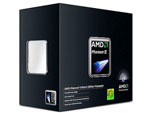 |
While the GPU is the most important factor in gaming performance, the CPU is also a factor - particularly at or below 1280x1024. To make sure the CPU is not a bottleneck now or in the near future, a Black Edition Phenom II X3 is our CPU choice. The Phenom II X3 720 Black Edition has an unlocked multiplier should you choose to overclock, which makes overclocking as simple as it gets. It has three cores rated at 2.8GHz, with 3x512KB L2 cache, and 6MB shared L3 cache. As a 45nm Phenom II, it is also a dynamite overclocker. In fact it is the same CPU we have recommended in our Phenom II Overclocking Guide.
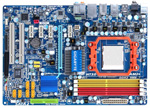 |
The first board that came to mind when we decided to build a budget system with the HD 4770 video card was the Gigabyte GA-MA770-UD3. This board is a perfect match for the Phenom II 720 BE or 710 processors and those looking to maximize their performance on a limited budget. This board targets the budget overclocker and features the AMD 770 IOH and SB700 Southbridge. Gigabyte offers support for the latest AM2+ and AM3 CPU processors with BIOS F5 while overclocking has been a treat (260+ HT ref clocks) with our Phenom II or Athlon X2 processors. This board features Gigabyte's Ultra Durable 3 Classic technology, 16GB of DDR2 memory support, Realtek ALC 888 HD audio codec, Realtek RTL8111C Gigabit LAN, six 3Gb/s ports capable of RAID 0/1/10, a single IDE port, twelve USB 2.0 ports, and IEEE 1394a support. The layout features one PCI-E x16 slots, four PCI-E x1 slots, and two PCI slots. This board has performed almost flawlessly to date (S3 resume was a bit touchy until the F5 BIOS) and is a genuine bargain at the current price.
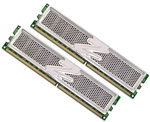 |
We've chosen OCZ Platinum 4GB DDR2-1066 (PC2-8500) with fast 5-5-5 timings in a 4GB kit for $38 after a $25 rebate. This is certainly a value price, but this is not value memory. It is high performance DDR2-1066 memory from a top memory supplier. The extra 1066 speed lets you run your memory at a faster speed or provide reserves for overclocking the CPU. OCZ is a great memory choice, but there are many memory options at great prices today if you shop around. Quality DDR2-800 and DDR2-1066 RAM from Corsair, OCZ, G.Skill, Mushkin, Patriot, and GeIL are available at any of the major online retailers. Just be sure to look for RAM with the better timings if you can afford it.
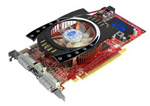 |
The kicker in both the AMD and Intel budget systems is the ATI Radeon 4770 video card. If you missed it, you can see the numbers in our ATI HD 4770 launch review. ATI's first 40nm GPU is a great performer at a bargain price of just $99. To quote the results from the review "The Radeon HD 4770 always outperforms the older 4830 and sometimes gives the 4850 a run for its money. As for the competition, the 4770 comes out on top in the games we tested. The more expensive GTS 250 leads in Call of Duty World at War, while the 4770 blows the doors off everything in Age of Conan. In the other benchmarks, they come out pretty close with the 4770 generally ahead, but the clincher is Far Cry 2 performance which shows the Radeon HD 4770 leading the GTS 250 fairly well in a heavy hitting graphics engine."
Those results should explain why we were so interested in including the ATI 4770 in our Budget systems. With this $99 video card and a competent AMD or Intel entry system, even gamers should be satisfied with the performance of an $800 computer.
The remaining components are minor upgrades from our entry systems. The hard drive is a little larger with a 640GB Western Digital instead of 500GB. The cost is just $10 more. The DVD burner remains the same fast Sony 24X.
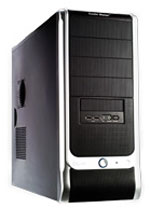 |
The case receives an upgrade with the selection of the Cooler Master Elite 330 and our AnandTech Gold Editors' Choice BFG Tech LS-550 power supply. The BFG has had a $20 rebate for several months that reduces the final cost to $60. The BFG 550W is a great power supply, but you could save a few dollars here with an OCZ, Corsair, or PC Power and Cooling PSU as they are often on rebate in recent months. It all depends on timing of your system purchase.
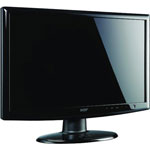 |
The LCD display was an easy choice with the 1080p ASUS 21.5" LCD for just $155 after a $10 rebate. A 19201080 TN panel with a 3-year parts and labor warranty from a major computer manufacturer is about as good as you'll find in this price range. If you prefer a larger display, you can find 23.5" LCDs starting at $250. Another interesting option is the Samsung 2343BWX, a 23" LCD with a native resolution of 2048x1152 on a 16:9 panel. Priced at $220, it's the highest resolution you're likely to see before moving to dual-link DVI. If you need to save a few dollars a lower resolution 19" like the $99 Acer 1680x1050 widescreen chosen in the entry systems will save some money. Any of these LCDs will work for most users, but we haven't discussed image quality.
Honestly, the LCD market has been quite disappointing during the past year. Virtually everyone is moving to TN panels now, because they're inexpensive. One of the better panels we tested was an AU Optronics S-MVA panel in the 24" BenQ FP241VW, but besides being expensive (over $800 at launch) it's also discontinued, and there were other aspects of the LCD we didn't like, for example the base stand and sluggish OSD controls, plus some problems with non-native resolutions. However, the viewing angles and lack of image lag were huge pluses. If you can find a 24" LCD with an AU Optronics S-MVA panel at a reasonable price, you might want to get it while you can.
The fact is, outside of LCDs costing $400 or more, pretty much everything is now TN panels. HP does offer the LP2275w (22" S-PVA) and the LP2475w (24" S-IPS), but both cost a lot more than similar sized TN panels, and some users report issues with the LP2275w. If you just want a decent, inexpensive 22" to 24" LCD, we personally haven't seen a lot to differentiate one brand from another. That's not surprising, since there are only a handful of actual panel manufacturers, so outside of the base panel the main differences will be in features. If you're worried about color accuracy or viewing angles, you shouldn't get a TN panel; if you're not concerned with getting the "best" image and colors, you probably won't notice the difference between "great" and "lousy" panels.










65 Comments
View All Comments
bupkus - Tuesday, May 19, 2009 - link
Could you list a Crossfire motherboard option for those who think of a budget system as one that would allow a second HD4770 for future upgrade?Gary Key - Wednesday, May 20, 2009 - link
Hi,Unlike the AMD side, there are not any standout CF boards that fit within our budget guidelines for this article. That said, I like the DFI BI P45-T2RS at $107, ASRock P45XE at $90, Biostar TForce TP45HP at $100, and my favorite P45 board, the Gigabyte GA-EP45-UD3P at $130 but $110 with a rebate right now.
With the last BIOS update, the DFI LP JR P45-T2RS at $110 is an interesting choice as it is an uATX format and works well in a SFF system, especially with two HD4770 cards. I have not tested the ECS BS P45T-A, but it seems to have positive comments around the forums (looking at price compared to performance/quality) for $82 with the MIR.
Wesley Fink - Tuesday, May 19, 2009 - link
For an AMD CPU there are lots of good Crossfire X motherboard choices. One geed choice is the Asus M4A78 Plus which sells for just $79 so it still fits the budget very well.Choosing an Intel board with dual PCIe x16 slots is a lot more difficult. I have asked Gary Key, our Motherboard Editor, to comment on an Intel choice.
PC Reviewer - Monday, May 18, 2009 - link
id change the video card to an hd 4890 if you could throw in the extra money..http://pcreviewer.org/new-radeon-hd-4890-video-car...">http://pcreviewer.org/new-radeon-hd-4890-video-car...
Lunyone - Monday, May 18, 2009 - link
As the previous poster stated that the Gigabyte g41 mobo listed has only 2 DIMM slots and not 4 as pictured in the article. This is one of the main reasons I prefer AMD mobo's over most Intel based mobo's. AMD's mobo's "usually" have more options included for a given price (usually less than Intel based ones). This isn't always true, but I'd say that 80-90% of the time it is true.Anyone know of any good links to the Sigma 500w PSU?? I'm just curious how well it does under testing or in real world situations. I try and keep up on good PSU's and I'm having a hard time finding reviews for the Sigma PSU listed in this review. I've read some on their other offerings >650w, but can't seem to find one for the 500w level.
Wesley Fink - Tuesday, May 19, 2009 - link
We had the correct Gigabyte G41 photo in the images, but the wrong link. THat has been corrected and you will now see the small image with the two dimm slots, which is all available on the $65 G41 MB.The 2 dimm slots can easily handle our recommended 4GB of memory. If you want more than 4GB you will need a more expensive motherboard.
Shocker1322 - Sunday, May 17, 2009 - link
I happen to be specing out a computer that is also using the GA-G41M-ES2L, however the picture posted looks to be that of a GA-EP45-UD3R. A key difference is the 4 DIMM slots on the GA-EP45-UD3R vs the 2 DIMM slots on the GA-G41M-ES2L.PrinceGaz - Friday, May 15, 2009 - link
I know the main point of this article was main system recommendations, but I would suggest you do some basic research before recommending some of the other bits to go with it.The recommendation of the Logitech EX110 wireless keyboard and mouse set literally left me open-mouthed. Just because it has the Logitech name doesn't mean it is a quality product. I had an EX110 for a day. The keyboard was DOA, and the mouse both felt and acted like the very cheap optical mouse it was (when left stationery, the mouse pointer slowly creeped to one side, and sometimes the mouse pointer jumped to the edge of the screen). And that's before the batteries. The EX110 is known to eat batteries very quickly, so you should add the cost of some NiMH rechargeables (and the charger if necessary) to the system build cost. My overall impression of it (the keyboard didn't work but I still got a feel for how the keyboard felt) was that it was bargain-bin no-name product, which Logitech have foolishly stuck their name on to capture some of the low-end market.
Spend a touch more on the keyboard and mouse and you can get products which perform much better, like the LX-6 mouse which can run off a single AA cell for two or three months of heavy use (or you can put two in for double the life as they are connected in parallel), instead of using two of them in a week or so. As for the keyboard, any RF wireless keyboard with sufficient range should be fine as even the cheap ones don't eat batteries (there is no potentially power-draining LED or laser needed on a keyboard), and an HTPC is unlikely to be used for serious typing duties.
Apart from that small point about what I guess was a blind "this is cheap and is wireless from a good company" recommendation of the EX-110, it was an excellent article.
Ah yeah, one other thing made me smile: on the page 3 (Intel entry-level) about the Asus P5QL-CM mobo:
"It is not an overclocking demon with our E5200/E7200 being limited to the 345FSB range due to the chipset, but that is more than enough headroom (4.16GHz with the E5200) for most users."
This is the entry level system costed at around US$300 for the base system, and you feel the need to mention the recommended CPU with that mobo will probably not be able to be overclocked beyond 4.16GHz from its stock 2.5GHz! Good grief, if it were an overclocking-system guide, then you might mention that, buy you are talking about what is an over 70% overclock limitation in what is an entry-level box! Seriously-- a 70% overclock limitation because of the mobo in an entry-level box.
strikeback03 - Monday, May 18, 2009 - link
We have bought 3 of the EX110 sets for student computers here at work. All have worked on arrival, and none eat batteries excessively (couple months per charge). The keyboard isn't the highest quality, but my biggest concern for HTPC use would be the range. They seem to be limited to a few feet, which would mean the receiver would have to be buried in the couch or something.pirspilane - Wednesday, May 27, 2009 - link
Yes, the range is a problem. The EX110 is better suited for desktop use.I put the RF receiver on the top rear of my armoire, since the cord wouldn't reach to the front. Reception was erratic from only 6 feet away.
It works OK now that I moved the receiver to the front of the armoire on top of the TV shelf.